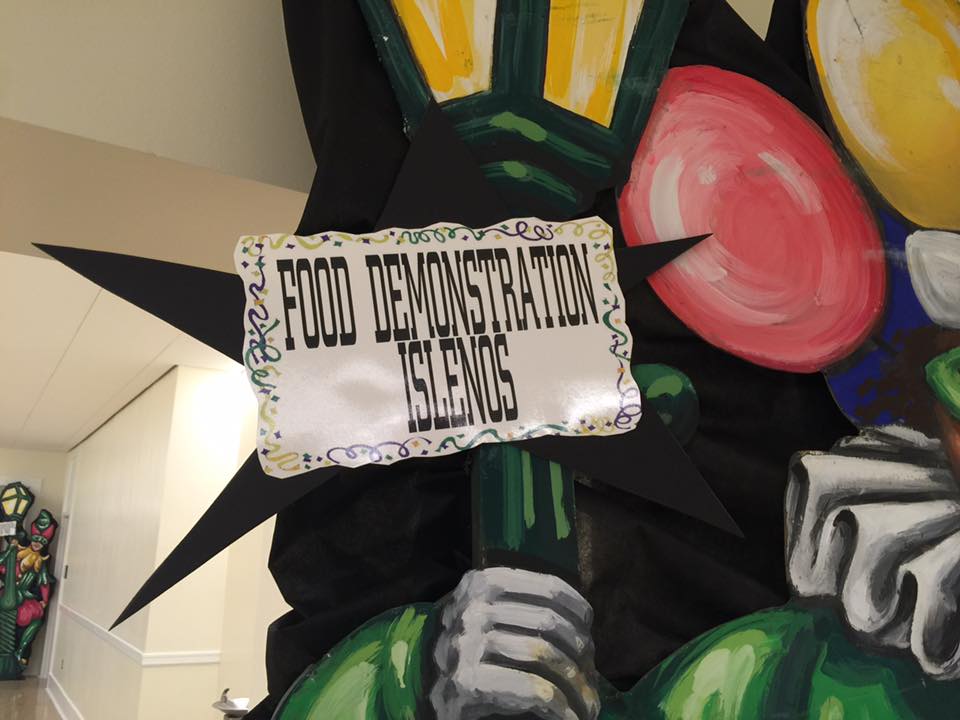 One of the educational programs of Los Islenos (photo courtesy of: Los Islenos Facebook)
One of the educational programs of Los Islenos (photo courtesy of: Los Islenos Facebook)
St. Bernard’s Irish-Italian-Islenos Parade is on Saturday, April 14. And while Irish and Italian cultures are celebrated far and wide in America, less is known about Los Islenos. So what does it mean to be an Isleno, or ‘Islander’?
Los Islenos is an allusion to the islanders from the Canary Islands, the first ever colony of Spain, says Bill Hyland, Los Islenos Museum Complex executive director. They came to Louisiana between 1778 and 1783 in order to colonize it for the Spanish government and develop it as a barrier to British Colonial expansion.
There were four of these settlements situated strategically to protect New Orleans along the waterways that led from the Mississippi River to the Gulf of Mexico. “They were given land grants, houses were built for them, and they were given everything that the Canary Island settlers needed to establish themselves in the New World,” says Hyland.
In many ways, they came to a much better life, Hyland says. The Canary Islands were 200 miles from the Sahara Desert and received only two inches of rain per year. People lived in one-room huts of stone with palm roofs on the slopes of volcanoes, farming in the volcanic rock.
But in Louisiana, they had sixty-inches of rain, beautiful soil to cultivate, and traditional Creole cottages made of mud and moss, and they received boats built for them by the Spanish government.
Los Islenos proved to be excellent soldiers as well, fighting under the command of Governor Galvez in the American Revolution and then later, in 1814, when Great Britain invaded Louisiana, “Los Islenos fulfilled the destiny that Spain had foreseen when they participated in the American victory in the Battle of New Orleans against the British,” Hyland says.
Los Islenos would go on to distinguish themselves in other fields as time went on. Maybe the most famous was Alcide ‘Yellow’ Nunez. Born in the 1870’s, the clarinetist made the second known recording of jazz music in the United States, says Hyland. “He was in the Louisiana Five, he toured all over Europe, and was a rock star, if you will, of his time.”
St. Bernard’s Sammy Nunez served as president of the state senate, and Domingo Fleitas was a doctor who became director of what we would’ve called Charity Hospital, Hyland says. His house still stands on Bayou Road just off Esplanade Avenue.
And while doing some research at Spain’s Archives of the Indies, Hyland found some documents – ship manifests containing the provisions carried aboard – and noticed that Los Islenos brought with them ‘chayote,’ which was a staple (often stuffed) in the Canary Islands. We know chayote by its French name – mirliton.
About 2,000 Canary Islanders came to Louisiana on those first ships 250 years ago. Through intermarriage, Hyland estimates that today the numbers of the descendants to be in the hundreds of thousands. “We’re always finding people from Donaldsonville, Lafayette, Baton Rouge, people here in New Orleans who previously had no idea that they were Canary Island descendants and they’re learning, of course, that they are.”
While it’s possible to learn more about Isleno culture at the Isleno Museum Complex in St. Bernard, the culture is alive in the people of the parish. “We have a contingent of our residents, seventy and above, who still speak Spanish as the first language after two and a half centuries,” Hyland says.
“So that as the Acadians represent so well France, the Islenos are the last living vestige of Spanish Colonial Louisiana. You can see the Cabildo, you can see buildings in the French Quarter, you can see the written records of the Cabildo, you can visit the New Orleans notarial archives…but only the Islenos of St. Bernard and the descendants of the Canary Islanders in Louisiana constitute that living vestige of Spain and her colonial presence.”
 NOLAbeings
Multimedia artist Claire Bangser created NOLAbeings as a portrait-based story project that marries...
NOLAbeings
Multimedia artist Claire Bangser created NOLAbeings as a portrait-based story project that marries...
 Data corner: Adobe Suite (create a PDF, social media graphic, presentation, edit a photo and video
Data corner is where you go to work with analytics and top tech skills. It takes on everything from PERL and SQL to Canva and Sprout Social.
Data corner: Adobe Suite (create a PDF, social media graphic, presentation, edit a photo and video
Data corner is where you go to work with analytics and top tech skills. It takes on everything from PERL and SQL to Canva and Sprout Social.
